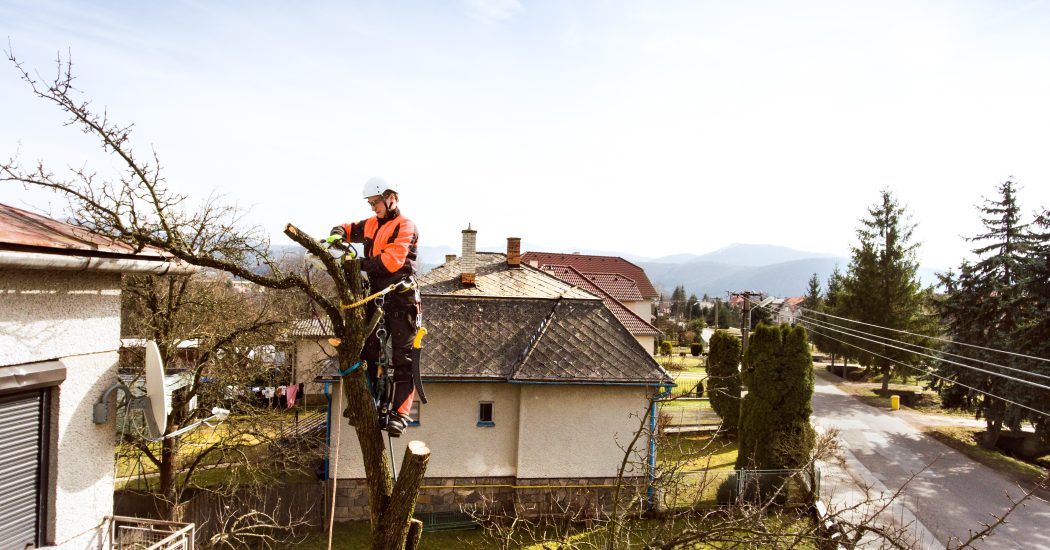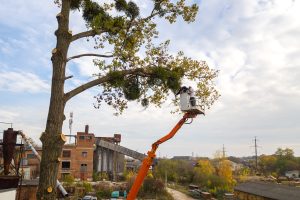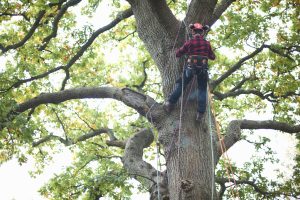
As homeowners, we know that trees can be a beautiful addition to our property, offering shade, beauty, and even a bit of privacy. However, there are times when a tree may become a danger rather than an asset. Knowing when to remove a tree is essential for the safety of our family, our property, and the health of our other trees. Here, we’ll highlight the top signs that it may be time to remove a tree from our property.
Before we dive into the signs that indicate a tree should be removed, it’s important to understand why tree removal can be necessary. A tree that is damaged, diseased, or structurally unstable can pose serious risks. From falling branches to entire trees toppling over, these hazards can cause significant damage to our home, vehicles, and loved ones. In some cases, a tree removal might even be needed to protect our other plants or property features like sidewalks or driveways.
Trees are living organisms, and as such, they show physical signs when they’re in distress. Here are some key visual indicators that we should pay attention to:
 A tree that suddenly begins to lean or tilt significantly can be a major red flag. While some trees naturally lean in one direction, a noticeable shift in the tree’s position could suggest that the root system is compromised. If we notice the tree is leaning towards our home or other structures, it’s time to consult a professional to evaluate whether it should be removed before it falls.
A tree that suddenly begins to lean or tilt significantly can be a major red flag. While some trees naturally lean in one direction, a noticeable shift in the tree’s position could suggest that the root system is compromised. If we notice the tree is leaning towards our home or other structures, it’s time to consult a professional to evaluate whether it should be removed before it falls.
Trees that have large dead or dying branches are not only unsightly, but they also pose a risk of falling. If the branches are too high to safely prune ourselves, it may be a sign the tree is no longer healthy enough to be saved and might need to be removed entirely. Large branches falling can cause damage to our property or pose a safety hazard to people and pets nearby.
When we see cracks or cavities forming in the trunk of a tree, it’s usually a sign of internal decay. Trees rely on their trunks to support their weight and provide structural integrity. If the trunk is compromised, the tree becomes unstable and is at risk of falling. A professional tree-cutting service can help assess the severity of the damage and determine whether removal is the best option.
The appearance of mushrooms or other fungal growth around the base of a tree can be a sign of root rot or internal decay. These fungi thrive in decaying wood, and if we notice them, it’s a good idea to have an expert inspect the tree. Root rot can severely weaken a tree, making it more likely to fall, so removal might be necessary to avoid future issues.
Sometimes, trees pose a threat not because of disease or decay, but because they’re simply too close to other structures or property features.
The roots of trees are incredibly strong and can grow large enough to cause damage to our property. If we notice our driveway, sidewalks, or home foundation starting to crack or shift, it could be due to the roots of a nearby tree pushing against the structures. If the damage becomes too severe, tree removal might be the best solution to protect our property.
Trees that grow too close to power lines or buildings can be a serious hazard, especially during storms. Overhanging branches can cause power outages, fires, or even damage to roofs and windows. If we have trees that are dangerously close to power lines or our home, it’s crucial to remove them before they cause a problem.
While trees can add beauty to our yards, those that are too close to our homes can create a range of issues. They may block sunlight, damage the roof or walls, or even cause leaks through clogged gutters. If we find ourselves trimming branches back regularly or dealing with other related issues, it might be time to remove the tree.
Even healthy trees can sometimes fall victim to pests or disease, which can weaken them to the point of being hazardous.
Insects like termites, beetles, and other pests can cause significant damage to trees. If we notice an infestation or signs of wood-boring insects, the tree could be at risk of becoming hollow and unstable. In these cases, removing the tree is often the safest option to prevent further damage.
Trees, like any living organism, can suffer from various diseases. If we notice unusual leaf discoloration, early leaf drop, or the tree’s overall appearance deteriorating, it may be diseased. Certain tree diseases can spread quickly, weakening the tree’s structure and potentially infecting other trees nearby. If a disease has advanced beyond treatment, removal may be necessary.
 Sometimes, no matter how much we want to save a tree, it becomes clear that it’s beyond recovery.
Sometimes, no matter how much we want to save a tree, it becomes clear that it’s beyond recovery.
A tree that has stopped growing or shows no new leaf growth during the spring could be in serious trouble. If the tree appears stunted or its branches have stopped producing leaves, it’s a sign that it might be dying. A tree that is no longer growing is unlikely to survive long-term, making it a prime candidate for removal.
Storms can cause major damage to trees, especially if they have already been weakened by disease or decay. If a tree sustains significant damage during a storm, such as a large break in the trunk or widespread branch loss, removal might be necessary to prevent it from becoming a danger.
If you’ve noticed any of these signs, it’s time to reach out to a professional tree cutting service like ours at TurnKey Tree Cutting. We specialize in safely removing trees, assessing their health, and ensuring the safety of our clients’ properties. Don’t wait until it’s too late—contact us today for a consultation and let us help keep your property safe.
By recognizing these signs early, we can protect our homes, families, and property from the potential dangers that unstable trees can present. Let’s work together to keep your landscape healthy and safe.